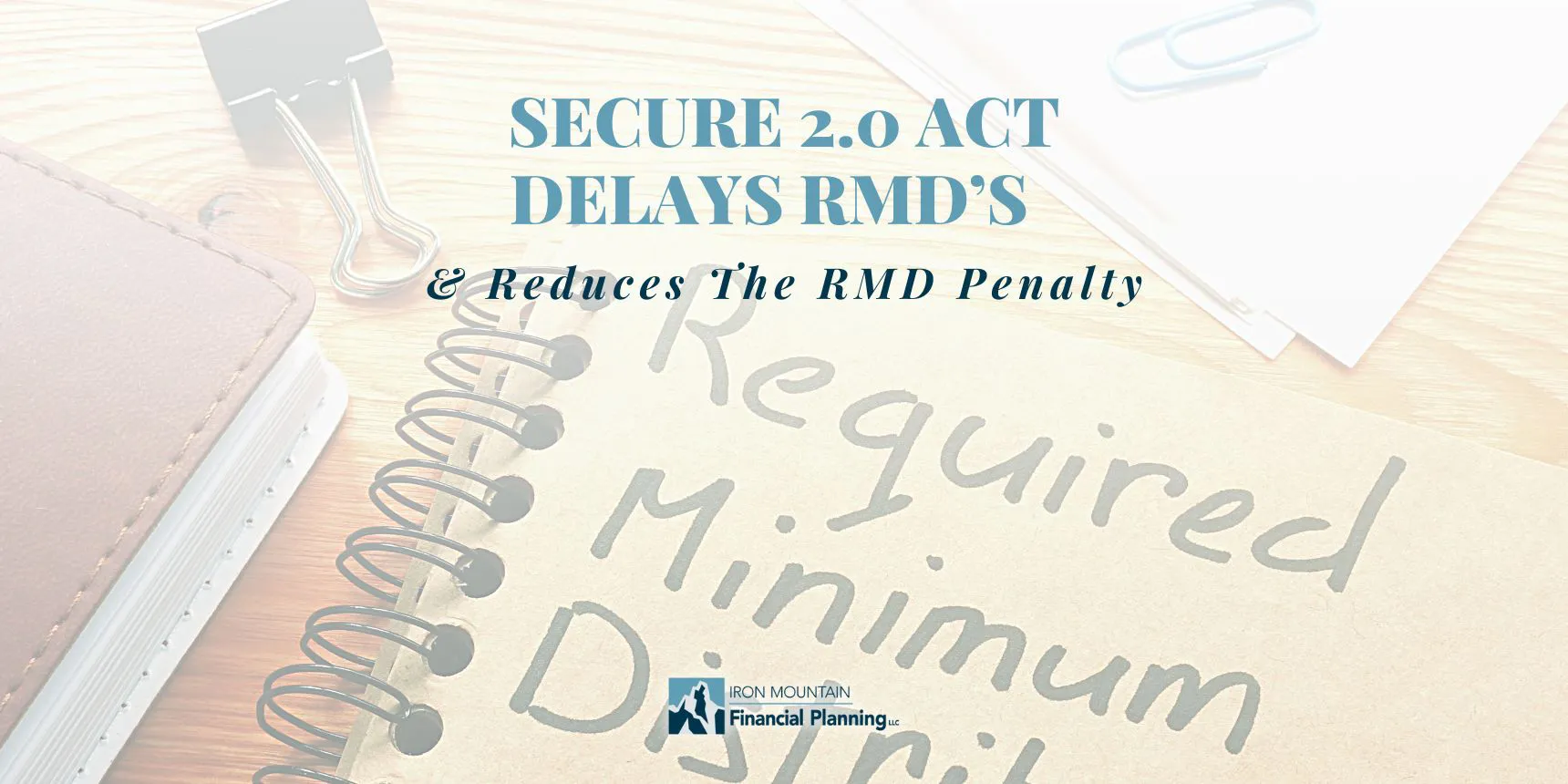Three years had passed since the original SECURE (Setting Every Community Up for Retirement Enhancement) Act of 2019 brought with it several long-awaited changes rules around retirement saving. These included raising the age of required minimum distributions (RMD’s) and eliminating age limits for traditional IRA contributions.
The Consolidated Appropriations Act of 2023 was signed into law in December of 2022 and includes dozens of retirement-related provisions collectively known as SECURE 2.0. Two of these retirement-related provisions raise the starting age of RMD’s in two steps over the next decade. Another reduces the penalty for failing to take RMD’s by half starting now.
Brief History of the RMD
The RMD rule was originally created because Congress had legislated incentives thru the passage of Employee Retirement Income Security Act (ERISA) in 1974 for people to save for their retirement years through tax-deferred retirement accounts (traditional IRA and workplace retirement plans) by making contributions tax-deductible. Over time, these traditional IRA and workplace retirement plans began to accumulate large amounts of yet un-taxed assets, creating a potential taxable revenue stream for the government.
Some time passed before Congress passed the Tax Reform Act of 1986 which included rules requiring an annual distribution requirement for workers beginning at age 70 ½. These required distributions forced workers into taking taxable distributions from their saved retirement assets.
Or worded another way, the required distributions allowed the government to begin tapping into that reserve of previously un-taxed assets. This rationale is inline with the fact that there are no RMD’s required from Roth IRA’s. There’s simply no tax revenue to force out of the tax-free growth and earnings of a Roth IRA.
Life expectancy had increased dramatically by 2019 when the original SECURE (Setting Every Community Up for Retirement Enhancement) Act was passed. Among many other retirement-related provisions, this legislation moved the starting age of RMD’s from age 70 ½ to age 72.
Increasing Starting Age for RMDs to 73 in 2023
The SECURE 2.0 increases the starting age of RMD’s to age 73 for those individuals who turn 72 on or after January 1, 2023. Notably, an individual who reaches age 72 in 2023 is not required to take an RMD for 2023. However, if an individual turned age 72 in 2022 or earlier, they are required to continue making minimum distributions as before; there are no changes impacting individuals who reached RMD age prior to 2023.
For those individuals turning age 72 in 2023, they will not have to begin taking RMD’s until next year, 2024, when they reach age 73. Therefore, a person’s first RMD is due for the year he or she turns 73, in 2024. There would be no RMD for 2023 for this individual. Thus, the deadline for taking their first (initial) RMD would be April 1, 2025.
Increasing Starting Age for RMDs to 75 in 2033
The SECURE 2.0 also delays starting age for RMD’s to 75 beginning January 1, 2033. Those individuals turning age 75 in 2033 will need to take their first (initial) RMD by April 1, 2034.
Reducing the Penalty for Failing to take RMD’s starting in 2023
Prior to the SECURE 2.0 being passed, the penalty for not taking all of the RMD for a given year was 50% of the total RMD amount. If an individual did not take all the required amount in a given year, the penalty the IRS demanded was 50% of the undistributed amount. While the IRS did allow some generous exemptions for this significant penalty, not taking all of the RMD amount was an expensive mistake.
The SECURE 2.0 also reduces the penalty for failing to RMD’s on a timely basis from 50% of the undistributed amount to 25% beginning in 2023.
Isn’t Raising the Starting Age of RMD’s Good News?
I lean heavily in the camp that believes that we are living in the golden era of low individual federal income tax rates for several reasons. One of them is that the Tax Cuts and Jobs Act of 2017 legislated in the current federal income tax tables and is also currently legislated to sunset in 2026. Unless extended or reworked by Congress and signed into law by the president, 2026 will bring with it higher tax rates for any individual with income above the 10% tax bracket.
The required amount of RMD’s is calculated based on a life expectancy factor published by the IRS. As an individual ages, the number of years until their life expectancy gets smaller. The IRS’ life expectancy factor is based on this, and the net result is that every year that passes, the percentage of the account required to be distributed increases.
While the instant gratification of delaying the starting age of RMD’s can feel like a blessing in 2023, the truth is this simply delays taxable distributions into the future where individual federal income tax rates are legislated to increase.
Like most aspects of retirement and tax planning, many retirees choose to manage their retirement account distributions and tax planning themselves. For those who would like some unbiased help, my financial planning service includes retirement and tax planning services that encompass the complex and ever-changing retirement rules and strive to minimize the expected lifetime taxes of clients.
If help developing a retirement income plan and minimizing what you pay to the IRS over your lifetime is of interest to you, click here to schedule a time to talk.





